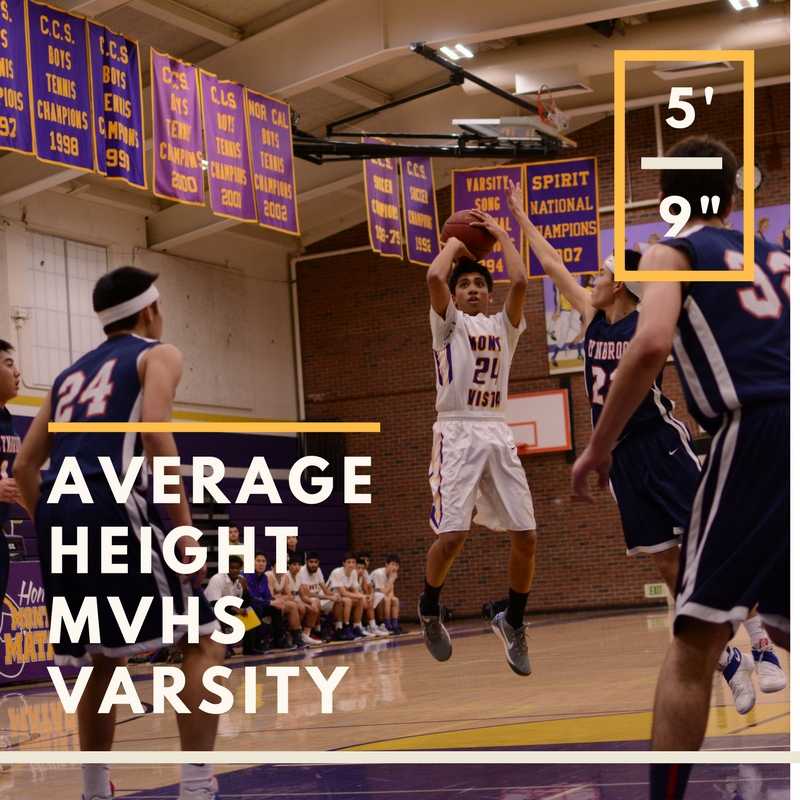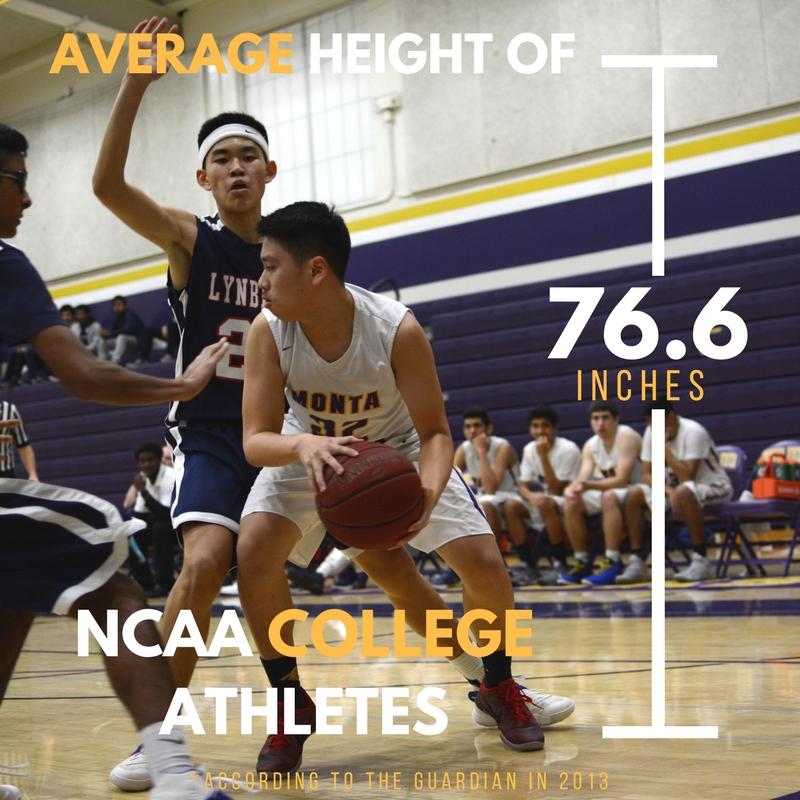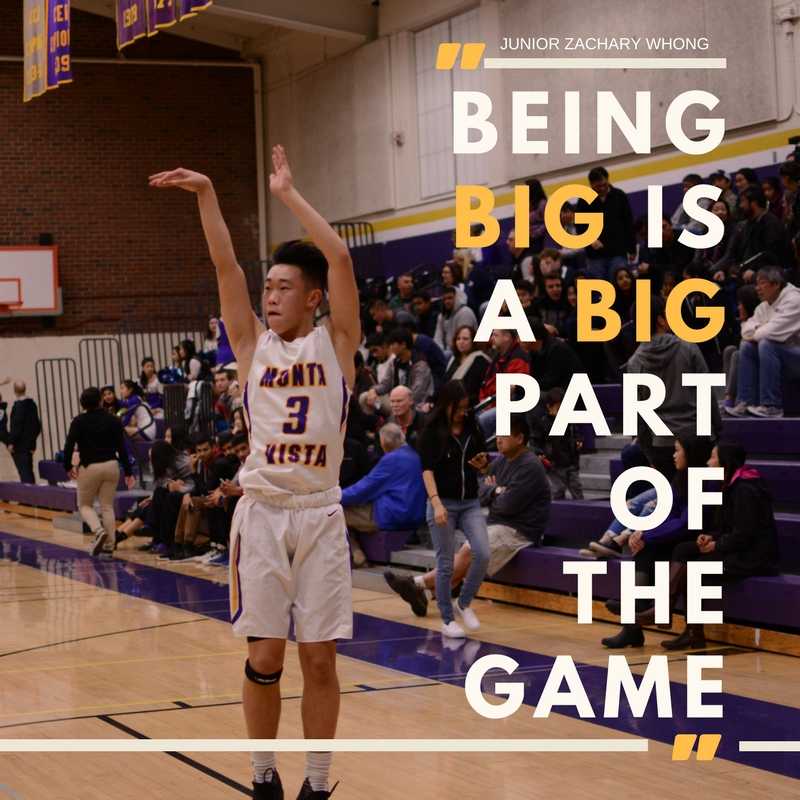This story appeared in the Feb. 2017 issue of El Estoque under the title “Mismatched”.
Whenever the MVHS boys basketball team meets its opponents at half court on game night, they look mismatched. Almost without exception, their opponents tower over them. But despite these potential disadvantage, the Matadors continue to compete against these larger teams.

The team is one of the shortest in the league, with an average height of five feet eight and a half inches. The Matadors’ tallest player stands at six feet two inches, which is nothing to scoff at, but still remains one of the shorter centers in the league.
Junior guard Zachary Whong, a two-year varsity veteran who is five feet nine inches tall, has realized he can’t rely on his size when playing.
“Being big is a big part of the game — size plays a major factor in the game of basketball,” Whong said. “So when you’re small, you have to use your speed, you have to play smarter, you have to make reads better.î
Part of playing smarter comes from the direction of the bench, where head coach Jim Forthoffer guides his players through the game, holding his classic placards with labeled plays and defenses. Forthoffer, who formerly coached at Mountain View HS, experienced a significant transition when he switched schools, as Mountain View HS had a more traditional basketball program, where the team’s average height was around six feet.
With this new team, Forthoffer has brought about a different style of play that relies less on height. Offensively, this style consists of an effort to move the ball by repeatedly screening and cutting to get an open shot. This way, players don’t need to worry about directly facing someone who’s much larger than them.

“If I can fake one way and beat you to the basket, [it] doesnít matter how tall you are,” Forthoffer said.
Although the team is shorter than the average high school team, Forthoffer says the players are more flexible than most common teams, making it more feasible to learn plays.
This mindset also makes it easier to overcome old habits and to start boxing out defensively, which he says was something the team needed to do.
Height especially plays a role on the defensive side. Initially a taller team can easily get over the shorter players and go to the basket. But Forthoffer says that his players need to get used to immediately boxing out after a shot has been taken, as that denies the larger opponents from reaching over for the rebound.

During practice, the taller players tend to give in to the instinct to reach, but this habit shouldn’t carry over to the game where MVHSí tallest players are only seen as average compared to other high school basketball teams like Mountain View HS.
Another defensive strategy is double-teaming larger guards. Double-teaming consists of two players who are generally shorter both guarding a single person with the ball in attempt to get a turnover. However, the team must maintain a rotation to consistently defend the person with the ball. MVHS’ speed allows them to rotate easily and still be able to guard a big player.
“We have skilled players who are fast, can shoot pretty well, can pass, spread offensive court,” Forthoffer said.
Foothill College head men’s basketball coach Matt Stanley has similar experience playing with shorter teams. In his time serving as an assistant coach at Foothill College since 2006, he admits that around the Bay Area, there tend to be fewer taller basketball players.
“We’ve always been traditionally short, not by choice,” Stanley said. “But I would like someone really tall.”

Despite their seemingly shorter size, the Foothill team has been the only program in Northern California to make it to the playoffs for the past seven years. Stanley explains that they’ve achieved this by leaving the taller post players alone and focusing more on movement around the perimeter (the three-point line), similar to MVHS’ five-man rotation.
“You might be able to dribble past them to the basket and be able to force the other team’s hands by taking those good guys out, being quicker,” Stanley said.
It’ll often be a mismatched game for the Matadors. But Forthoffer doesn’t let the team’s size stop them from winning. He emphasizes this starts with players learning to combat their old habits and having the right mindset.
“Patient coaches are losing coaches,” Forthoffer said.
Forthoffer believes coaches should never be light on their players, as it doesn’t give players enough incentive to stay in the game, no matter how tall they are. Whong agrees.
“My mindset for every game is the same,” Whong said. “It is just to stay aggressive, and to just make the right reads for the team to allow us to win.”
Photo illustrations by Akshara Majjiga.








